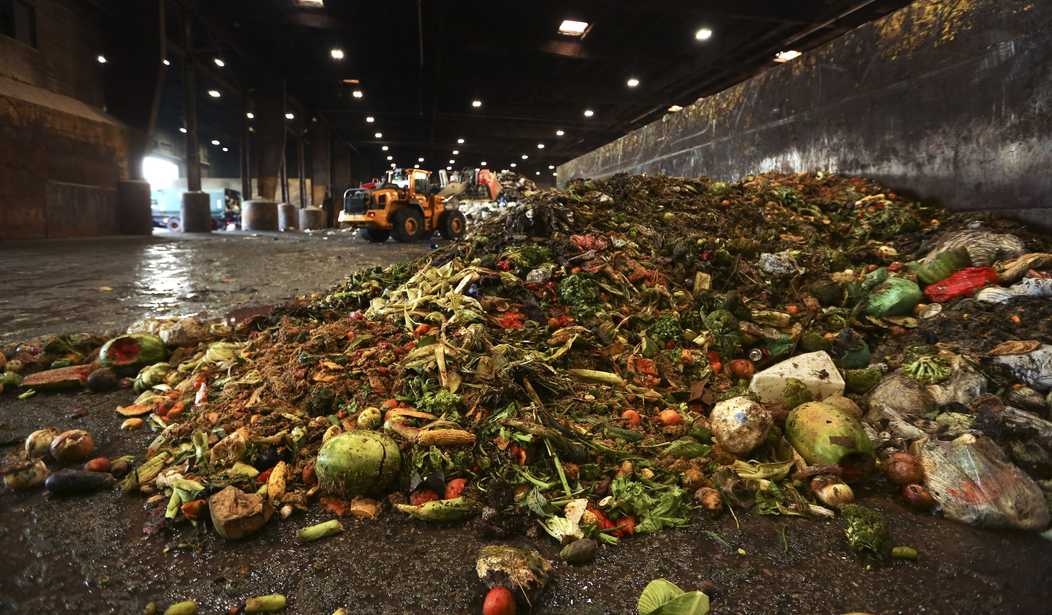The United States is a fabulously wealthy country compared to most of the world. We also grow more food than any other nation in human civilization's history.
It stands to reason that we also throw away a large portion of the food we buy. The government says that 30% of our food ends up in landfills. How true that is can be questioned. The EU, on the other hand, only wastes 10% of the food purchased. Regardless, there's no doubt that a significant portion of the food we buy ends up in garbage dumps.
How big a problem is food waste? Anyone who's ever pulled "mystery meat" from the back of the freezer knows that a lot of food waste is the product of our success. We're so blessed that we can forget about a meal or two and end up having to throw it away. Food past the manufacturer's spoil date, stuff we bought and just didn't like—the reasons households get rid of food are endless.
The government of the United States wants to change that. "The White House strategy involves efforts to change the behavior of both businesses and individuals to reduce waste, as well as to fund research into extending the shelf life of perishable foods, expand food donations and turn food waste into usable commodities like compost, gas or animal feed," reports the New York Times.
“Everyone has a role to play in reducing food loss and waste, and I hope that these federal commitments will inspire and catalyze action in the private sector and communities around the U.S.,” Secretary of Agriculture Tom Vilsack, said in a statement.
It's not just consumers. Supermarkets throw away far more food, largely because it has spoiled or is past the due date. ReFED, the national nonprofit dedicated to ending food loss and waste, says that most discarded food comes from commercial concerns.
According to ReFED’s latest figures, in 2021, the United States produced 91 million tons of unsold, uneaten food. Nearly half of it was still edible, but only 2 percent was donated.
ReFED’s research has found that 20 percent of food is lost at the farm level in the United States. The reason might be that a grower can’t get high enough prices for, say, a crop of tomatoes, or perhaps the tomatoes don’t meet the size, shape or color specifications set by retailers.
Stores, restaurants and industrial kitchens throw out food that doesn’t sell. And in homes, many people discard food that’s still safe to eat, in part because “best by” labels can be confusing and don’t necessarily indicate when food is bad.
Several individual states are going one step further and forcing supermarkets and other food sellers to engage in altruism and donate food they would ordinarily dump.
Washington State requires grocery stores to donate still-safe-to-eat food. Vermont requires its residents to compost food. Maryland offers farmers a tax credit if they donate edible food. Massachusetts limits how much food businesses can send to landfills. And New York State requires large food businesses to donate excess edible food and recycle remaining scraps if they are within 25 miles of a composting facility or anaerobic digester.
Are individual households next? “It would be hard to pass a national organic waste ban for a number of reasons, but I would love to see the federal government offer more incentives to cities and states that pass such policies,” said Emily Broad Leib, who runs the Food Law and Policy Clinic at Harvard Law School.
The White House will try to get Congress to "fund research into technologies that could extend the shelf life of food, like new seed varieties and better packaging," according to The Times.
The government will also invest in research to measure the “effectiveness of different consumer messages to encourage households to reduce food waste” and help students learn food waste prevention tips, including in school cafeterias, which can be enormous sources of food waste.
Is the government going to mandate instruction in food waste strategies for school kids? It's not like they have anything else to learn, right?










Join the conversation as a VIP Member